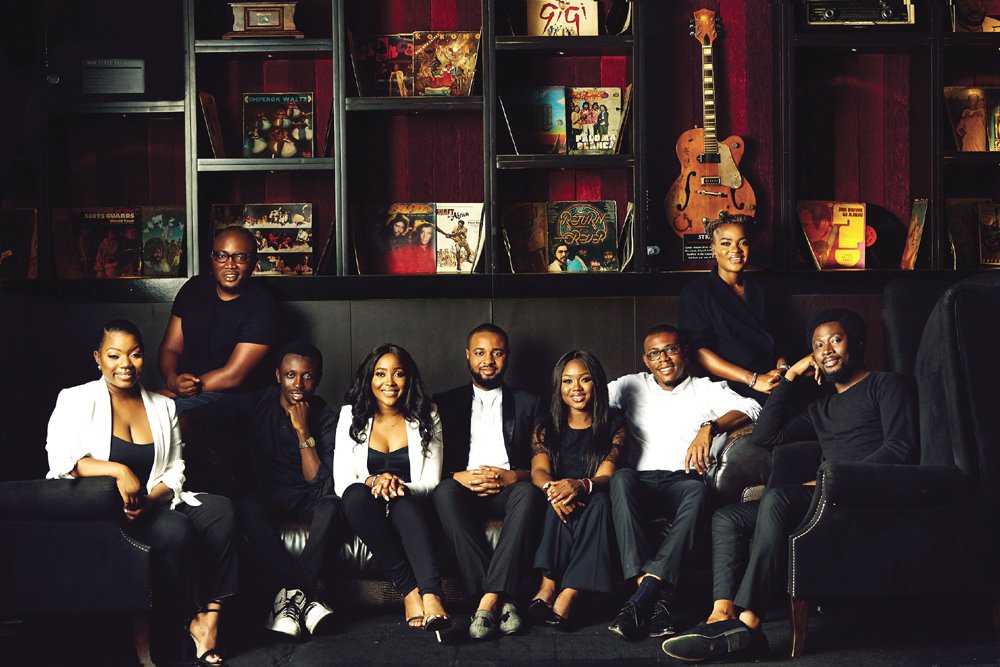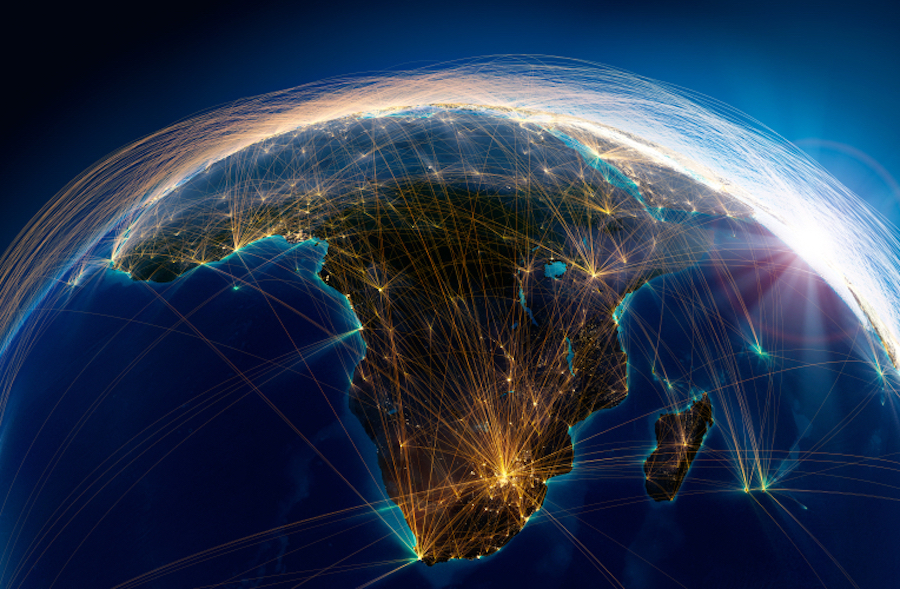There is, justifiably, enormous optimism in the global music industry around the potential of China and India, the world’s two most populous nations, as digital starts to open doors and create new opportunities. Equally, Latin American nations are already showing that songs sung in Spanish or Portuguese can travel globally in ways they simply couldn’t in the CD era in what we can call The ‘Despacito’ Effect.
However, Africa – the second-largest continent in the world, made up of 54 separate countries – is not receiving the same amount of focus. Yet all the building blocks are being put in place, both in terms of local developments and investment by international music players, to suggest that it will be topping the global music industry’s agenda in the coming years.
“All the building blocks are being put in place, both in terms of local developments and investment by international music players, to suggest that Africa will be topping the global music industry’s agenda in the coming years.”
The potential is unquestionably there, but it is going to be difficult to show just how much it can grow as market figures are unclear for the continent as a whole. The IFPI, in its recently published global numbers for 2018, did not even include Africa in its regional breakdown.
Yet there are hugely encouraging developments that indicate this statistical oversight should not be repeated in the future.
Streaming service Anghami has been charging forward in MENA (Middle East and North Africa) since 2012 and now claims to have 21m monthly active users, of which 1m are paying subscribers. It says it has been used by 78m people to date and that just under a fifth (18%) of users are outside of the Middle East. It is offering, like Spotify, a freemium service and this is seen as key to its future as it is operating in markets where credit card penetration is low and disposable income is seriously limited outside of the elite classes, meaning that ad-funded is the only viable option for the bulk of consumers. While markets in the West grapple with the value gap conundrum, a service like Anjghami is showing it is going to be the primary model for what the IFPI terms “high-potential markets”.
Outside of Arabic nations in northern Africa, other local streaming services are coming forward and building foundations – none more so than Boomplay. Also taking a freemium approach, Boomplay was founded in 2015 in Nigeria and focused initially on local and independent content. It signed a licensing deal with Universal Music Group last November and in March this year signed another one with Warner – the latter covering not just Nigeria but also Cameroon, Cote d’Ivoire, Ghana, Kenya, Rwanda, Senegal, Tanzania, Uganda and Zambia. It claims to have 44m users (it is not saying how many are active or what percentage are subscribers) and it also recently secured $20m in new investment to fund its expansion.
A new entrant in Africa is uduX, based in Nigeria, which signed its first licensing deal with Universal in April this year and which claims to be the first domestic service in Nigeria to offer high-quality audio and HD music videos. At launch, it will be available for a monthly subscription fee via the Habari app (the music, shopping and lifestyle content platform created by GTBank), but a standalone app is expected to follow later this year.
On top of this, Simfy – which began in South Africa in 2012, making it an incredibly early mover here – was acquired by telco MTN in November last year, showing that the sector is attracting serious investment with the hope of sharp market acceleration in the coming years.
“Of course, local services are not going to have it all to themselves. The major international players are also making preemptive moves to get established in what they regard as the first wave of African nations to get on board with streaming.”
Of course, local services are not going to have it all to themselves. Growth in African markets fuelled by African services is, of course, cause for celebration and a sign of each market’s belief in itself; but the major international players are also making preemptive moves to get established in what they regard as the first wave of African nations to get on board with streaming.
Chinese technology company Huawei expanded its Huawei Music offering to South Africa in March last year and Tidal has also started to make its presence felt, signing a deal with telco MTN (which, of course, now owns Simfy) to debut in Uganda as part of a bundled deal. While these are all somewhat minor players on the global scene, the major global brands are also seeing Africa as a growing priority.
Apple Music got in earliest, having launched in South Africa in June 2015 and expanded into Nigeria, Ghana, Botswana, Kenya, Uganda, Mozambique, Namibia, Niger, Zimbabwe, Gambia and Swaziland. Deezer arrived in MENA in October 2018 and Spotify slipstreamed it the following month (having already launched in South Africa in March 2018). And in March 2019, YouTube Music landed in South Africa.

The Universal Music Nigeria team
It is not just streaming services setting up operations in Africa, with Universal Music steadily expanding its footprint across the continent. In July 2018, it launched a new division that will focus on Africa’s francophone nations. While based in the Côte d’Ivoire, it will also cover Cameroon, Congo, Mali, Senegal and Togo in its remit. The same month it also opened its Universal Music Nigeria division, covering not just Nigeria but also Ghana, Gambia and other nearby countries.
Also seeing South Africa as a talent base for new artists, Platoon opened its Cape Town Creative Lab in September last year, initially working with unsigned acts from South Africa and Zimbabwe. (Platoon was subsequently acquired by Apple in December 2018.)
And it is not just record labels and DSPs leading the charge here, with publishers also making their presence felt. LyricFind signed a blanket deal with CAPASSO (the South African mechanical rights organisation) in the closing weeks of 2018 to cover the monetisation of lyrics on a variety of services and platforms across 38 markets in Africa.
While IFPI does not measure revenues across the continent as a whole, there are some numbers available for parts of Africa, suggesting where it is growing and why so many are excited about the potential here. Streaming revenue in South Africa rose 334.2% in 2016, according to the IFPI, followed by a 40.2% increase in 2017 (rising in value from $8.4m in 2016 to $11.78m in 2017). The country also saw a 12.4% increase in total growth in recorded music income, finally turning around several years of decline.
Digital will also provide the framework for music in a number of African markets. Data published last October from Pew Research Center focused on Ghana, Kenya, Nigeria, Senegal, South Africa and Tanzania noted that the median internet use across the six countries is 41% (compared to 59% in South Africa itself). “Whereas internet use in many of the world’s advanced economies has plateaued in recent years, use in sub-Saharan Africa has notably increased,” said Pew. “In 2014, 15% of sub-Saharan Africans owned a smartphone, compared with 33% who own one today. The number of people connected to the internet is likely to continue to rise, too; industry projections suggest that the smartphone adoption rate in sub-Saharan Africa will double by 2025.”
We are currently getting a patchwork sense of what is happening in Africa as a whole. South Africa is returning to growth, digital will be key in some markets, MENA is a priority for international services and Nigeria as well as a range of francophone nations are where Universal sees the greatest opportunity. But we also must understand that developments here only give us a partial insight into what is currently happening as well as what could be coming over the horizon here.
“Against all the optimism, there is still work to be done in a number of African markets to ensure the music business grows there and creators and rightsholders are fairly recompensed.”
Against all the optimism, there is still work to be done in a number of African markets to ensure the music business grows there and creators and rightsholders are fairly recompensed. Speaking at the NY:LON conference in London in January this year, Kechukwu Onuorah, the second VP of the Artiste Managers Association in Nigeria, said, “Our music is reaching the international stage much faster than we are able to do business.”
He claimed that enforcement of copyright laws is not a high priority for the governments of many African nations and that seriously impacts on writers, musicians, publishers and labels.
“There’s a lot of embezzlement of money and poor administration, so a lot of artists begin to lose faith in the collecting societies,” he said. “But my argument to them is that a lot of African collecting societies are operating in the 21st century when all of a sudden the eyeballs of the world are on them […] No collection society is perfect, and Africa is growing and trying to adjust to a number of things while the world’s spotlight is on it.”
Just at the precise moment it is set to shine, the pan-African industry is modernising at a rapid pace. Because the continent comprises so many different markets at different stages of their evolution (and, therefore, offer different levels of potential), it makes it harder to talk about Africa in the same way the industry is currently talking about India or China. Yet within this geographic and digital complexity are a series of markets on the cusp of exploding. External investment, proven domestic successes and a brewing digital revolution could be Africa’s perfect storm.

